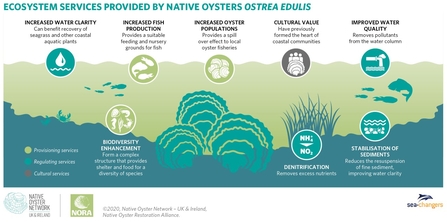Nature's water filters
The native or flat oyster (Ostrea edulis) is a sessile (fixed in one place), bivalve (2-part shell) mollusc. It is a filter feeder meaning it uses its valves to pump water across hair-like gill structures to filter out microscopic algae and small organic particles from the surrounding water. A single oyster can filter up to 200 litres of seawater (approximately a bathtub) per day, which can significantly improve water quality and clarity. By removing particles from the water column, the oyster can also increase light penetration to the sediment and promote the recovery of seagrasses, another threatened and valuable coastal habitat.



